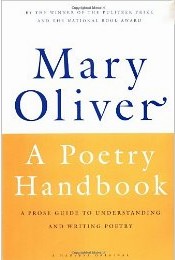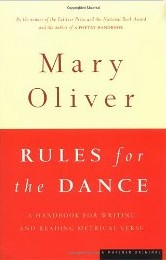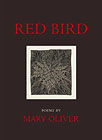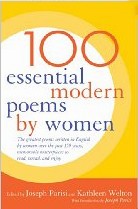Mary Oliver: Poetry and Prose
Mary Oliver
 Books of Poetry (alphabetical).
Books of Poetry (alphabetical).
 Prose.
Prose.
 Editing.
Editing.
 Time Line.
Time Line.
 Books.
Books.
Mary Oliver featured in:
 Best American Poetry: 2009
(guest editor David Wagoner)
with "Red".
Best American Poetry: 2009
(guest editor David Wagoner)
with "Red".
 Best American Poetry: 2006
(guest editor Billy Collins)
with "The Poet with His Face in His Hands".
Best American Poetry: 2006
(guest editor Billy Collins)
with "The Poet with His Face in His Hands".
 Best American Poetry: 2000
(guest editor Rita Dove)
with "Work".
Best American Poetry: 2000
(guest editor Rita Dove)
with "Work".
 Best American Poetry: 1999
(guest editor Robert Bly)
with "Flare".
Best American Poetry: 1999
(guest editor Robert Bly)
with "Flare".
 Best American Poetry: 1993
(guest editor Louise Glück) with
"Poppies".
Best American Poetry: 1993
(guest editor Louise Glück) with
"Poppies".
Mary Oliver's tone relies heavily on the ecstatic and the shamanistic,
on the throwing of her consciousness into
various of the birds she writes about,
and returning to her page to tell us what they feel and think.
Use of the pathetic fallacy is so heavy
that sometimes it is gushy, predictable, routine, and boring.
She is more successful (as in examples below for
Owls and Other Fantasies)
when she gives herself distance as an observer and metaphor maker.
|
American Primitive (1983)
|
|
Blue Iris: Poems and Essays (2004)
|
Solid; but no surprises.
Leaf and the Cloud, (The) (2000, prose poem)
Blog entry.
|
Quite good in parts.
The usual Oliver controlled ecstatic.
She calls the whole book a prose poem (even though she uses line breaks whereas a prose poem
is usually not laid out like a poem). Perhaps the seven named sections
would be called poems in other books. Each of these sections has numbered subsections (usually
7 but sometimes 10 or 12).
Her style is of subdued ecstasy with a tendency to repetition.
For example, subsection 8 of the first section ("Flare") is:
The poem is not the world.
It isn't even the first page of the world.
But the poem wants to flower, like a flower.
It knows that much.
It wants to open itself,
like the door of a little temple,
so that you might step inside and be cooled and refreshed,
and less yourself than part of everything.
|
The title comes from the remarkable Modern Painters
by John Rushkin, in this quoted chapter:
Between the earth and man arose the leaf.
Between the heaven and man came the cloud.
His life being partly as the falling leaf,
and partly as the flying vapour.
|
|
New and Selected Poems Volume One (1992)
|
|
New and Selected Poems Volume Two (2005)
|
|
Night Traveler, (The) (1978)
|
|
No Voyage and Other Poems (1963, first edition; 1965, expanded edition)
|
Her tone relies heavily on the ecstatic and the shamanistic,
on the throwing of her consciousness into
various of the birds she writes about,
and returning to her page to tell us what they feel and think.
Use of the pathetic fallacy is so heavy
that at times it is predictable, routine, and boring.
For me, Oliver is more successful as an observer and metaphor maker, as in the
glorious
"Little Owl Who Lives in the Orchard",
whose (partial) opening stanza is:
His beak could open a bottle,
and his eyes [...]
go on reading something
just beyond your shoulder --
Blake, maybe,
or the Book of Revelation.
|
Similar success is in
"White Owl Flies Into and Out of the Field",
whose center is:
so I thought:
maybe death
isn't darkness, after all,
but so much light
wrapping itself around us --
as soft as feathers --
|
Included poems that appeared earlier in her books:
and one poem ("White Owl Flies Into and Out of the Field")
that was previously published only in:
Periodicals in which some poems appeared are:
- Appalachia
- Onearth
- Shenandoah
- The Southern Review
- Spirituality and Health
- Spiritus
The essay ("Owls")
first appeared in Orion
and was reprinted in
The Best American Essays 1996
and then in her own book:
One of her finest books. Favorite poems are many and include:
- "Both Worlds" (p. 51-52)
- "Eleven Versions of the Same Poem" (p. 66 onward)
- "Night and the River" (p. 8-9)
- "Night Herons" (p. 24)
- "Of the Empire"
- "Percy and Books (Eight)" (p. 29)
- "Red Bird" (p. 1)
- "Red Bird Explains Himself" (p. 78)
- "Self-Portrait" (p. 7)
- "Small Bodies" (p. 31), ending (and notice the interesting comma at the end of the
penultimate line):
Still, there are so many small bodies in the world,
for which I am afraid
|
- "Sometimes", a multi-part poem starting on p. 35, and whose 4th part has these marvelous
"Instructions for living a life:"
Pay attention.
Be astonished.
Tell about it.
|
- "Straight Talk from a Fox " (p. 11)
- "Swimming, One Day in August" (p. 56)
- "Who Said This?" (p. 58)
Data:
- 61 poems (one poem is "Eleven Versions of the Same Poem"
but the book jacket includes each version in the count)
in a single section.
- 78 pages; about 1.3 pages per poem.
- Number of stanzas:
- 14 (23%) of the poems are written in a single stanza.
- 3 poems in 2-line stanzas.
- 8 poems in 3-line stanzas.
- 13 (21%) poems in 4-line stanzas.
- 1 sonnet-type poem.
- 22 (37%) poems in stanzas of variable (but usually six or fewer) lines.
- 15 (25%) poems take more than one page.
- The poems refer in traditional ways to the Christian God.
5 of the poems in a convenience sample of the first 10 poems in the book have
such references:
God, God-fearing, Lord-love, Maker of All Things, and the afterlife.
- The poems are rich in the senses. A convenience sample of the first 10 poems in the book has:
- Sight mentioned/implied on average 0.9 times per poem.
- Touch on average 0.8 times per poem.
- Sound on average 0.5 times per poem.
- Smell on average 0.4 times per poem.
- Taste on average 0.3 times per poem.
- Acknowledges prior publications in these journals (in most of which she is often published):
- Appalachia
- Bark
- Cape Cod Voice
- Five Points
- Onearth
- Orion
- Parabola
- Portland Magazine
- Reflections
- Shenandoah
- The Southern Review
- Spiritus
|
River Styx, Ohio, and Other Poems, (The) (1972)
|
Dedication: "For Molly Malone Cook (1925-2005)".
A book of love and loss. Favorite poems include:
- "In the Storm" (p. 62-63)
- "Mozart, for Example" (p. 12)
- "Praying" (p. 37)
- "The Uses of Sorrow" (p. 52)
Data:
- 43 poems
in a single section with one
poem in an epilogue.
- 67 pages; about 1.6 pages per poem.
- Number of stanzas:
- 1 poem written in a single stanza.
- 1 poems in 2-line stanzas.
- 3 poems in 3-line stanzas.
- 12 (28%) poems in 4-line stanzas.
- 1 sonnet-type poem.
- 23 (53%) poems in stanzas of variable (but usually six or fewer) lines.
- 2 prose poems.
- 16 (37%) poems take more than one page.
- The poems refer in traditional ways to the Christian God.
2 of the poems in a convenience sample of the first 10 poems in the book have
such references:
God, dear God, the capitalized 'His'.
- The poems are rich in the senses. A convenience sample of the first 10 poems in the book has:
- Sight mentioned/implied on average 0.8 times per poem.
- Touch on average 0.8 times per poem.
- Sound on average 0.6 times per poem.
- Smell on average 0.3 times per poem.
- Taste on average 0.3 times per poem.
- Acknowledges prior publications in these journals (in most of which she is often published):
- America
- Appalachia
- Best Catholic Writing of 2006
- Cape Cod Voice
- Episcopal Times, Portland
- Five Points
- Nature and Spirituality
- Orion
- Shenandoah
- Spiritus
|
A Thousand Mornings (2012)
|
A pretty good collection in the now-familiar Mary Oliver voice.
Favorite poems:
- p. 61. "In our woods, sometimes a rare music"
- p. 67. "On traveling to beautiful places"
- p. 69. "The man who has many answers"
Data:
- 36 poems
in a single section, each poem starting on an odd page, which leaves a blank facing page
for every poem preceded by an odd-number-of-pages poem (26 blank
pages in all).
This gives the poems an appearance of usual grandeur and spaciousness.
- 77 pages — but there are 51 pages if we exclude the blank pages, which gives about 1.2 pages of text per poem.
- Acknowledges prior publications in these journals:
- Appalachia
- Bark
- Five Points
- The New York Times
- Orion
- Parabola
- Portland
- Shenandoah
- Wilderness
West Wind: Poems and Prose Poems (1997)
Blog entry.
|
It's an okay book in three parts.
Part one has the regular Mary Oliver type poems, of which her "Black Oaks" is the best example,
ending:
Today is a day like any other: twenty-four hours, a
little sunshine, a little rain.
Listen, says ambition, nervously shifting her weight from
one boot to another—why don't you get going?
For there I am, in the mossy shadows, under the trees.
And to tell the truth I don't want to let go of the wrists
of idleness, I don't want to sell my life for money,
I don't even want to come in out of the rain.
|
Part two is the 13-section poem "West Wind" with 8 of the sections being prose poems.
Part three is a multi-stanza 5-section poem "Have You Ever Tried to Enter the Long Black Branches".
White Pine: Poems and Prose Poems (1994)
Blog entry.
|
An ok book.
A significant portion are prose poems.
Good (in a Mary-Oliver way) but nothing spectacular.
Favorite poems include:
- "Clouds" (p. 22)
- "Freshen the Flowers, She Said" (p. 7)
- "Look Again" (p. 61).
- "Song of the Builders" (p. 60)
- "The Arrowhead" (p. 11)
- "This Worlds" (p. 27)
- "What Was Once the Largest Shopping Center in Northern Ohio Was Built Where There Had Been a Pond
I Used to Visit Every Summer Afternoon" (p. 36)
Data:
- 47 poems
in two sections: 30 in the first section and 17 in the second section.
- 67 pages (excluding blank pages and boiler plate); about 1.4 pages per poem.
- Number of stanzas:
- 5 (11%) of the poems are written in a single stanza.
- 0 poems in 2-line stanzas.
- 0 poems in 3-line stanzas.
- 16 (23%) (11 and 5) poems in 4-line stanzas.
- 28 (53%) (14 and 10) poems in verse paragraphs of variable size (but usually seven or fewer lines).
- 2 prose poems.
- 18 (34%) poems take more than one page.
- The poems are rich in the senses. A convenience sample of the first 10 poems in the book has:
- Sight mentioned/implied on average in 1.0 poems.
- Touch on average in 0.9 poems.
- Sound on average in 0.7 poems.
- Taste on average in 0.3 poems.
- Smell on average in 0.2 poems.
- Acknowledges prior publications in these journals:
- Cape Cod Voice
- Double Take
- Image
- The New Yorker
- Onearth (formerly Amicus)
- Oprah Magazine
- Poetry
- The Southern Review
- Spiritus
- Wilderness
Fifteen prose pieces on nature, writing, and herself.

|
|
A Poetry Handbook (1994, prose)
Blog entry.
A concise and deft introduction to the craft and spirit of writing poetry.
|
Sections titled:

|
|
Rules for the Dance:
A Handbook for Writing and Reading Metrical Verse (1998)
Blog entry.
Practical and succinct.
|
- Part One: The Rules.
- Breath
- Patterns
- More About Patterns
- Design: Line Length
- Release of Energy Along the Line
- Design: Rhyme
- Design: Traditional Forms
- Words on a String
- Mutes and Other Sounds
- The Use of Meter in Non-Metric Verse
- The Ohs and the Ahs
Use them if you need them but
"never when it merely suits the marching orders of the meter".
- Image-Making
- Part Two: The Dancers One by One.
- Style
- Part Three: Scansion and the Actual Work.
- Scansion: Reading the Metrical Poem
- Scansion: Writing the Metrical Poem
- Yourself Dancing: The Actual Work
- Part Four: A Universal Music.
- Then and Now
- Part Five: An Anthology of Metrical Poems.
Very helpful, taking the last half of the book.
|
Winter hours: prose, prose poems, and poems (1999)
|
|
Blog entry.
|
- Part One: Essays and Poems.
From her "Once":
|
What is autobiography anyway but a story rich and impossible of completion --
an intense, careful, expressive, self-interested failure?
|
- Part Two: Four Poets. Essays on:
- Edgar Alan Poe.
|
In this universe we are given two gifts:
the ability to love, and the ability to ask questions.
Which are, at the same time, the fires that warm us and the fires that scorch us.
This is Poe's real story.
And it is ours.
...
[But] the later poems --
beginning with the volume West-Running Brook, say --
less commonly have that sense of a private man working at the conflicts in his life...
The poems become, in the later books, entertainments and pronouncements.
...
despair, wed to fortitude[,] ... is the dense emotion at the center of Frost's work.
... He could not hear the trill of the trees without the cry of the roots.
|
- Robert Frost.
|
In the lyrical poems of Robert Frost there is almost always something wrong,
a dissatisfaction or distress.
...
We are hearing two different messages:
everything is all right,
say the meter and the rhyme;
everything is not all right,
say the words.
...
He writes about our own inescapable destiny.
|
- Gerard Manley Hopkins.
|
[A] poetry of rapture and pain, of the perfection of God
and the awkwardness and imperfection of the poet.
|
- Walt Whitman.
[H]is was a sensibility so passionate, so affirmative and optimistic,
that it is fair to speak of him as writing out of a kind of hovering mystical cloud.
... "Song of Myself" is sprinkled with questions ...
More than sixty questions in all, and not one of them easily answerable.
Nor, indeed, are they presented for answers, but to force open the soul.
... It is supposed that a writer writes what he knows about knows well.
It is not necessarily so.
A writer's subject may just as well, if not more likely,
be what the writer longs for and dreams about, in an unquenchable dream,
in lush detail and harsh honesty.
... His message was clear from the first and never changed:
that a better, richer life is available to us.
... his methods are endlessly suggestive rather than demonstrative, and
... their main attempt was to move the reader toward response rather than reflection.
... Brawn and spirit, we are built of light, and God is within us.
This is the message of his long, honeyed harangue.
|
- Part Three: Intermission of prose poems. Some tiny fragments, grouped as "Sand Dabs".
A longer prose poem (or essay?) on observing a spider hatch three broods and capture a cricket.
I am a performing artist; I perform admiration.
Come with me, I want my poems to say. And do the same.
|
- Part Four: "Winter hours" essay.
Excellent essay on who she is, as a writer, even though I am dubious that birds 'sing' in the wind:
|
Morning, for me, is the time of best work.
My conscious thought sings like a bird in a cage,
but the rest of me is singing too,
like a bird in the wind.
...
In the act of writing a poem
...
[w]hat I hear is almost a voice,
almost a language.
It is a second ocean, rising,
singing in one's ear,
or deep inside the ears,
whispering in the recesses where one is less oneself than
a part of some single indivisible community.
Blake spoke of it as taking dictation.
I am no Blake, yet I know the nature of what he meant.
Every poet knows it.
One learns the craft, and then casts off.
One hopes for gifts.
One hopes for direction.
It is both physical and spooky.
...
the first act of writing, for me, involves nothing more complicated than paper and pencil.
The abilities of a typewriter or computer would not help in this act
of slow and deep listening.
|
Included poems that appeared earlier in her book:
Poems and essays were previously published in:
- Appalachia
- Green Mountains Review
- Ohio Review
- Poetry
- Poetry East
- Shenandoah
- Viginia Quarterly Review
The essay ("Building the House")
first appeared in Shenandoah
and was reprinted in
The Best American Essays 1990.
Best American Essays: 2009
- Editor for 2009 issue (series editor Robert Atwan).
- 2-page introduction.
- 187 pages, 22 essays, some as small as 2 pages; mean page length of 8.5 pages per essay.
- Pretty good collection thought many of the choices seem rather close to the editor's style.
- Favorites include:
- Sue Allison's prose-poem scant-page essay "Taking a Reading" (names of measurements).
- Wendell Berry's "Faustian Economics".
- Brian Doyle's 2-page "The Greatest Nature Essay Ever".
- Amy Leach's "You Be the Moon" (even if it's a little over-exuberant in its tropes).
- Jill McCorkle's "Cuss Time" (one of the of wisest parental essays).
- Ryan van Meter's "First".
- Jerald Walker's "The Mechanics of Being" on living with his two blind parents.
- 1935.
- Born.
- 1963.
- Published
No Voyage and Other Poems (1963, first edition; 1965, expanded edition).
- 1972.
- Published
River Styx, Ohio, and Other Poems, (The) (1972).
- 1978.
- Published
Night Traveler, (The) (1978).
- Published
Twelve Moons (1978).
- 1983.
- Published
American Primitive (1983).
- 1986.
- Published
Dream Work (1986).
- 1990.
- Published
House of Light (1990).
- 1992.
- Published
New and Selected Poems Volume One (1992).
- 1994.
- Published
White Pine: Poems and Prose Poems.
- Published
A Poetry Handbook.
- 1995.
- Published
Blue Pastures.
- 1997.
- Published
West Wind: Poems and Prose Poems.
- 1998.
- Published
Rules for the Dance: A Handbook for Writing and Reading Metrical Verse.
- 1999.
- Published
Winter hours: prose, prose poems, and poems.
- 2000.
- Published
Leaf and the Cloud, (The) (2000, prose poem).
- 2002.
- Published
What Do We Know (2002).
- 2003.
- Published
Owls and Other Fantasies: poems and essays (2003).
- 2004.
- Published
Why I Wake Early (2004).
- Published
Blue Iris: Poems and Essays (2004).
- 2005.
- Published
New and Selected Poems Volume Two (2005).
- 2006.
- Published
Thirst (2006).
- 2008.
- Published
Red Bird (2008).
- One of 48 women poets in
100 essential modern poems by women:
- 2009.
- Edited
Best American Essays: 2009.
- 2012.
- Published poetry book:
A Thousand Mornings.
- 2015.
- Published poetry book:
Felicity
-
Links and Books.
-
[Thanks for visiting.]
 Highlights of Poetry.
Highlights of Poetry.
 Index of poetry.
Index of poetry.
 How to Write Poetry.
How to Write Poetry.
 Haibun.
Haibun.
 Haiku.
Haiku.
 Hay(na)ku.
Hay(na)ku.
 Rengay.
Rengay.
 Tanka.
Tanka.
 Concrete.
Concrete.
 Ghazal.
Ghazal.
 Lai.
Lai.
 Pantoum.
Pantoum.
 Prose poem.
Prose poem.
 Rondeau.
Rondeau.
 Rubáiyát.
Rubáiyát.
 Sestina.
Sestina.
 Skaldic verse.
Skaldic verse.
 Sonnet.
Sonnet.
 Terza rima.
Terza rima.
 Triolet.
Triolet.
 Tritina.
Tritina.
 Villanelle.
Villanelle.
 Adam Zagajewski.
Adam Zagajewski.
 Aleda Shirley.
Aleda Shirley.
 Anne Carson.
Anne Carson.
 Arthur Sze.
Arthur Sze.
 The Beowulf Poet.
The Beowulf Poet.
 Billy Collins.
Billy Collins.
 Billy Collins exercise.
Billy Collins exercise.
 Snorri's Edda.
Snorri's Edda.
 Carl Dennis.
Carl Dennis.
 Charles Atkinson.
Charles Atkinson.
 Chase Twichell.
Chase Twichell.
 Corey Marks.
Corey Marks.
 François Villon
François Villon
 Franz Wright.
Franz Wright.
 Galway Kinnell.
Galway Kinnell.
 Gary Young.
Gary Young.
 The Gawain Poet.
The Gawain Poet.
 Jack Gilbert.
Jack Gilbert.
 Jane Hirshfield.
Jane Hirshfield.
 Jean Vengua.
Jean Vengua.
 J. Zimmerman.
J. Zimmerman.
 J. Zimmerman (haibun).
J. Zimmerman (haibun).
 J. Zimmerman (haiku).
J. Zimmerman (haiku).
 J. Zimmerman (tanka).
J. Zimmerman (tanka).
 Jorie Graham.
Jorie Graham.
 Joseph (Joe) Stroud.
Joseph (Joe) Stroud.
 Karen Braucher.
Karen Braucher.
 Karl Shapiro.
Karl Shapiro.
 Kay Ryan.
Kay Ryan.
 Britain;
Britain;
 USA.
USA.
 Len Anderson.
Len Anderson.
 Les Murray.
Les Murray.
 Li-Young Lee.
Li-Young Lee.
 Linda Pastan.
Linda Pastan.
 Louise Glück.
Louise Glück.
 Mary Oliver.
Mary Oliver.
 Nordic Skalds.
Nordic Skalds.
 Pulitzer Poetry Prize (U.S.A).
Pulitzer Poetry Prize (U.S.A).
 Richard Hugo.
Richard Hugo.
 Robert Bly.
Robert Bly.
 Sappho.
Sappho.
 Sara Teasdale.
Sara Teasdale.
 Sharon Olds.
Sharon Olds.
 Shiki (haiku).
Shiki (haiku).
 Snorri's Edda.
Snorri's Edda.
 Stephen Dunn.
Stephen Dunn.
 Ted Kooser.
Ted Kooser.
 W.S. Merwin.
W.S. Merwin.



